#International naval exercise
Explore tagged Tumblr posts
Text
youtube
#youtube#militarytraining#RIMPAC 2024#Naval cooperation#Defense partnership#New Zealand Navy#Peruvian Navy#International naval exercise#Naval technology#Naval capabilities#Hawaii#Naval drills#Warships#Naval forces#Pacific Ocean#Naval fleet#Maritime security#Navy tour#Military ships#Naval vessels#Naval training.#Navy ships#New Zealand#Naval#Travel#Peru#Military#Navy#Adventure#Fleet
1 note
·
View note
Text
As China’s 'encirclement' of Taiwan continues, US warship sails through South China Sea
New Post has been published on https://www.timesofocean.com/as-chinas-encirclement-of-taiwan-continues-us-warship-sails-through-south-china-sea/
As China’s 'encirclement' of Taiwan continues, US warship sails through South China Sea
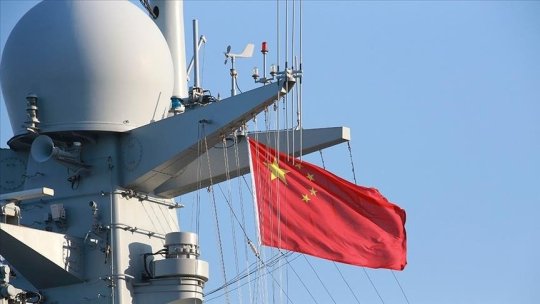
Istanbul (The Times Groupe) – Beijing conducted joint flights of jets and naval frigates on Monday after a US warship sailed through the disputed South China Sea.
People’s Liberation Army (PLA) said it “organized naval and air forces to track and monitor” the US Navy destroyer USS Milius that “illegally trespassed into waters near China’s Meiji Reef in Nansha Islands in the South China Sea on Monday.”
Earlier on Monday, the 7th Fleet of the US military in Asia-Pacific deployed its Arleigh Burke-class guided-missile destroyer USS Milius (DDG 69) in the South China Sea.
On April 10, the Arleigh Burke-class guided-missile destroyer USS Milius (DDG 69) asserted navigational rights and freedoms in the South China Sea near the Spratly Islands, consistent with international law.
Read more: https://t.co/BcOAXsufuO pic.twitter.com/PNyja70Vbv
— 7th Fleet (@US7thFleet) April 10, 2023
The fleet said it “asserted navigational rights and freedoms in the South China Sea near the Spratly Islands, consistent with international law.”
“ After completing the operation, USS Milius exited the excessive claim area and continued operations in the South China Sea.
Within 12 nautical miles of Mischief Reef, the United States conducted normal operations. Mischief Reef, which is submerged at high tide in its naturally formed state, is not entitled to a territorial sea under customary international law, according to the statement.
During the US warship’s voyage, China continued its three-day “military sword” exercises around Taiwan.
According to the Chinese daily Global Times, the PLA Navy Shandong aircraft carrier group was in waters east of Taiwan island where Chinese sorties, including those of J-15 carrier-borne fighter jets equipped with live missiles, took off and landed.
Taiwan’s Defense Ministry said its air defense units “remain on high alert for contingencies, steadfastly maintaining their posts 24/7, showing that we can and we will defend our skies.”
Taiwan detected 70 PLA aircraft and 11 PLA naval vessels around the island nation earlier today, 35 of which crossed the Taiwan Strait and entered Taiwan’s southwest and southeast air defense identification zones (ADIZ).
“And we will never give up our beliefs,” Taiwan’s Defense Ministry said on Twitter.
Neither the median line nor the ADIZ are recognized in Beijing.
In response to Taiwan’s President Tsai Ing-wen’s 10-day trip to Central America last week, US House Speaker Kevin McCarthy hosted Tsai Ing-wen for a meeting in California.
#Arleigh Burke-class guided-missile destroyer USS Milius (DDG 69)#asia pacific#Beijing#California#Chinese daily Global Times#disputed South China Sea#international law#Istanbul#jets#military exercises#military sword#Mischief Reef#naval frigates#People's Liberation Army (PLA)#south china sea#Taiwan#Taiwan's President Tsai Ing-wen#Taiwan’s Defense Ministry#United States#US House Speaker Kevin McCarthy#US Navy destroyer USS Milius#us warship#US warship's voyage#USS Milius#Politics
0 notes
Text

America’s goal in establishing a seaport is primarily military & political, not humanitarian: - Gain control over Gaza’s gas resources - Establish US-Israel military presence - Dismantle UNRWA & have aid distributed through local militias. - Isolate Gaza from the Palestinian body
Gaza City has a long history as a crossroad of regional trade & travel. As a port city, Gaza was a stop on the Incense Road. In more recent history, until WWI, Gaza seaport was a main hub for import & export trade to southern Palestine, & its hinterland, including Jordan and Iraq
Since 1967, Israel has exercised full control of Gaza’s 43km coastline and territorial waters, blocking ships from reaching the city. Gaza seaport is the only Mediterranean port closed to shipping, because of Israeli colonization and continued destruction.
Between 1967 and 1994, the existing infrastructure was severely neglected. Railways, air and seaports were no longer at the free disposal of Palestinians and were only there to serve Israel, its army and its settlers.
As part of the 1993 Oslo Accords, the Netherlands & France governments committed $42.8m to the reconstruction of the Gaza seaport and to the training of port personnel. A Dutch-French consortium that specialises in seaports signed a construction contract in July 2000 with the PA.
The seaport was scheduled to be completed by August 2002. But Israel being Israel, in 2000, Israel halted any construction & in 2002, Israeli navy attacked the PA naval patrol boats in Gaza, causing extensive damage and no further implementation of the project was allowed.
Since 2007, Israel has repeatedly bombed Gaza’s seaport, which only now serves Palestinian fishermen. It has repeatedly shot & killed fishermen and destroyed their boats. Israel is also imposing a maritime sea blockade on Gaza for more than 60 years. Israel is cutting life short.
In June 2010 the EU Parliament urged EU Member States to “take steps to ensure the sustainable opening of all the crossing points to and from Gaza, including the port of Gaza, with adequate international end-use monitoring”.
Establishing a maritime window from Gaza to the outside world is possible, if the focus is put on ending Israel’s state violence, war crimes & genocide. What the Americans are now doing isn’t providing LIFE to Palestinians, but actually entrenching Israeli colonization.
398 notes
·
View notes
Text
On 2 February 2022, the Russian navy was to begin an exercise in Irish waters. The Irish government had pleaded with the Kremlin not to go ahead, but in vain. Only when Irish fishermen intervened did the Kremlin decide to abandon the exercise. Any day now, Russian warships will return to Irish waters for another exercise, and the Dublin government can’t count on Irish fishermen to once again solve its predicament. Now that the neutral country needs to defend itself and its waters, it can only hope and plead.
‘Defence Forces “hyper aware” as Russian navy expected to conduct drills,’ the Irish Examiner reported on 17 September. The Irish Defence Forces are still hyper aware, for the Russian navy can arrive in Ireland’s Exclusive Economic Zone (EEZ) at any time. After a few embarrassing mishaps in the Black Sea at the hands of Ukraine, it is trying to prove its worth. Earlier this month, Russia conducted the massive Ocean 2024 exercise with the navy of China’s People’s Liberation Army and People’s Liberation Army air force. The mostly Russian exercise involved 400 warships, submarines and support vessels, more than 120 naval aircraft and more than 90,000 personnel.
Ireland’s waters weren’t part of Ocean 2024, but in recent years the Russian navy has shown considerable interest in Ireland. In May last year, for example, several Russian navy ships entered Ireland’s EEZ south of the country – and stayed put. ‘[The situation] is carefully monitored by Ireland and by others and that is an ongoing scenario where people track what’s happening within international waters and, indeed, within the Irish exclusive economic zone, which is quite large in itself,’ Tanaiste (Foreign Minister) Micheal Martin said after the ships arrived, adding that ‘I don’t see it as a threat, but it’s something we are very conscious of and we keep a very close eye on.’ It was not the first time Russian naval and merchant ships had mysteriously parked themselves off Ireland’s southern coast, which just happens to be home to an extraordinary concentration of undersea internet cables.
Indeed, some time in late 2021 or early 2022 the Russian navy decided to conduct an exercise in the EEZ. The exercise was to begin on 3 February 2022. The Irish government sought to prevent it from happening by pleading with the Kremlin and calling the exercise ‘unwelcome and unwanted’, but to no avail. Russia’s ambassador to Ireland, Yuri Filatov, declared that ‘there is nothing to be disturbed, concerned, or anguished about and I have extensively explained that to our Irish colleagues’.
The Irish government was powerless to make the exercise go away. In late January, it issued a statement advising Irish fishermen that the exercise would begin on 3 February and that vessels should be aware of ‘serious safety risks’ in the area and avoid entering it. Russia had indicated the exercises would involve naval artillery and rocket launches, the advisory explained. The fishermen were outraged. ‘This is the livelihoods of fishermen and fishing families all around the coastline here,’ Patrick Murphy, the chief executive of the Irish South and West Fish Producers Organisation, told RTE radio. ‘It’s our waters. Can you imagine if the Russians were applying to go onto the mainland of Ireland to go launching rockets, how far would they get with that?’
The fishermen took action. ‘Our boats will be going out to that area on the first of February to go fishing,’ Murphy told Politico on 25 January. ‘When one boat needs to return to port, another will head out so there is a continuous presence on the water. If that is in proximity to where the exercise is going, we are expecting that the Russian naval services abide by the anti-collision regulations.’ It was a clever move. By fielding a constant presence of fishing boats in the planned exercise waters, the fishermen would prevent the Russian navy from carrying out the exercise. The Kremlin backed down. Now the Irish fishermen’s showdown with the Kremlin is headed for the big screen: well-deserved fame for the West’s most unexpected national security strategists.
The Irish government can’t count on Murphy and his men to bail it out once again. Russia is prepared, and fishermen should not have to improvise national-security fixes. The Irish government is on its own, and that means having to face off the Russian navy and other prospective intruders with the means of the Irish Defence Forces. That’s a total of two army brigades, an army training centre, 17 aircraft (including helicopters) and six patrol vessels, some of which seem to be regularly in poor repair.
It’s not much with which to deter an intruder, even one merely wanting to frighten Ireland by loitering on top of the undersea cables connecting the world. No wonder Irish ministers firmly declare that the Irish Defence Forces are ‘hyper aware’ and that the government is ‘keeping a close eye’ on potential intruders: the country can do little more than be hyper aware.
Indeed, Ireland – which was so skillfully on trend during globalisation’s exuberant years and has so richly capitalised on globalised business – has thoroughly failed to spot the deteriorating situation around it. Other European countries are beefing up their armed forces, which, for the most part, were far larger than the Irish Defence Forces to begin with. Sweden and Finland, for so long neutral and then militarily non-aligned, have joined NATO. Neutral Ireland, by contrast, seems frozen in globalisation time – and even if it decided to shore up its defence now, this wouldn’t yield results any time soon.
That makes the many companies that have set up their European headquarters in Ireland (and depend on undersea cables to do business) highly vulnerable. Will they start leaving the island? We can’t know. What’s clear is that Ireland, a nation that bet everything on globalisation, is riding straight into a security dilemma.
23 notes
·
View notes
Text
US and Chinese soldiers take part in joint military exercises in Brazil

The United States and China may be on hostile terms, but the situation still leaves room for cooperation, even in areas as sensitive as military affairs. Dozens of U.S. and Chinese soldiers, specifically naval infantry, are participating alongside 3,000 Brazilian soldiers in joint military exercises in Formosa, in central Brazil.
Brazil is a good choice for this meeting as it is a regional power that takes a pragmatic approach to foreign policy — avoiding hostility in favor of dialogue and cooperation — and Beijing and Washington are, respectively, its first and second-biggest trade partners.
Most of the troops taking part in the military exercises — which involve airplanes, tanks, armored vehicles, amphibious vehicles and missile launchers — are from Brazil. The U.S. delegation has 56 soldiers, while the Chinese delegation has 33 riflemen, according to the Brazilian newspaper Folha de S. Paulo. In a sign of Brazil’s historically broad and eclectic alliances, the drills also include uniformed personnel from Mexico, South Africa, Argentina, Italy, Pakistan, the Republic of Congo, France and Nigeria, although in more modest numbers. Last year, China only sent military observers to these exercises, not soldiers, the Brazilian Navy reported.
With such moves, Brazil is emphasizing its traditional stance on foreign policy, which President Luiz Inácio Lula da Silva has expanded with the help of his long-time advisor on international affairs, Celso Amorim. The fact that soldiers from the superpowers are in Brazil is a sign of how the country is seeking to play an important role in global politics. “Brazil wants to be a mediator in the international system, to mediate between the South and the North, and between those antagonistic universes of geopolitics that are Eurasia, led by China and Russia, and the Atlanticist bloc, led by the United States and Europe,” explains Pedro Costa Júnior, an international analyst from the University of São Paulo.
Continue reading.
#politics#brazil#united states#china#international politics#armed forces#military#brazilian politics#us politics#chinese politics#foreign policy#image description in alt#mod nise da silveira
13 notes
·
View notes
Text
PURPLEROW
❤️What happens when the most famous woman in the world and a regular guy, fall in love?
👩🚀Astronaut Dana Scully is world famous for her accomplishments in space.
🦊 NASA psychologist Fox Mulder has admired her from afar, but is now tasked to keep her company virtually while she’s on a mission solo.
📖 RATED E. Chapters Daily. This is a NOTTING HILL AU. Chapter 1 below:

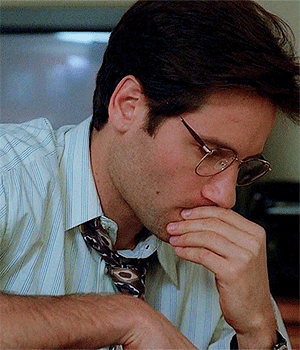
I was never meant to remain alone up here. It was supposed to be hours– twenty-two to be exact; everything in space is known and measured, precisely predicted. And yet, here I am—preparing to be completely alone for an unknown amount of time.
I hear the quiet whir of machines as I bound weightless from screen to screen, trying to determine my current status. But even as I look from screen to screen, my brain wrestles with a feeling of impending doom.
“Some issue with their main rocket,” the voice in the speaker tells me, “that’s why they aborted.”
I’ve prepared for situations like these. You don’t become an astronaut by being delicate or soft. I remind myself of the tough stuff I’m made of: graduating from The Naval Academy top of my class, breezing through medical school, and being recruited by NASA. Having a successful career as an astronaut—
“Dr. Scully, can you confirm your current velocity and the pressure parameters?” a technician asks, interrupting my inner pep talk. The technician is one of many voices from Houston—the Johnson Space Center, to be precise, where several dozen engineers and scientists monitor everything that is happening up here.
“Seventeen thousand, six hundred and eighty-four miles per hour, Houston. Pressure gauges are within limits.”
“Thank you, Dr. Scully. We’re working on next steps down here. The Director suggests you might do your daily exercises and report back when finished?”
“Affirmative.”
Houston ends the call. They’re still monitoring hundreds of readings—pressures, temperatures and speed among other things, but when our calls end, they mostly leave me alone.
Despite the isolation I feel at being alone here, it’s nice to have a bit of privacy in which to continue my mental meltdown. If every step I took up here was being watched as if I had a stalker…I think that would be worse.
I huff laughter at my thought—I don’t actually take steps here. I’m floating two hundred and fifty miles above Earth on the International Space Station. I push from a wall and float through a chamber into another section, finally ending up in node three.
ISS inhabitants are required to exercise daily for ninety minutes, a necessity to keep our gravity-less bodies healthy and strong. I use the weight-lifting machines and run on the treadmill—my body harnessed down so I don’t float away.
As my Nikes pound the platform, I close my eyes. I’m completely alone in space. No other human is with me, nor is anyone scheduled to join, thanks to a rocket issue with the Russians.
This was supposed to be the smallest mission on the ISS in terms of people; dubbed “Expedition 4A,” it was set to determine the minimum number of crew members that could successfully maintain the ISS between more elaborate missions. I am the lone American taking part, along with one Cosmonaut and one German who were set to join me today—but alas, the rocket failure.
I know I can handle myself up here—I’ve already been through some extraordinary situations with NASA. But, I feel haggard as I finish my run—my heart racing faster, my sweat beading harder, and my breath catching. It’s a panicky feeling I’ve experienced occasionally in life, but not in years.
I turn off the treadmill and take a deep breath, centering myself before returning to our main communications pod. Houston is waiting for me.
“Dana?” I hear the voice I recognize as Mission Director Walter Skinner booming through the speaker.
I pick up the headset—although I can hear through the speaker, the headset is much clearer. I turn on a monitor, seeing Mission Control brightly lit with dozens of bodies bustling about.
“Director Skinner. I’m here.”
“Alright, Dana. We’ve been discussing next steps. Our plan is to abort the mission and bring you back down, but it’s going to take us about a week to prepare.”
“Okay, sir,” I say. I’d love to argue the mission could continue with just me, but it’s not designed for one person, and I learned many years ago—as the daughter of a Naval Officer—that I need to accept the well-thought-out decisions of my commanders without debate.
“Also, we noticed a blip at the end of your workout—an anomaly—possibly indicative of a panic attack. Are you alright?”
How could I forget I’m hooked up to heart and respiratory monitors while exercising? Houston misses almost nothing—they can’t afford to—too much is at risk. “I’m alright, sir. I just needed a moment to collect myself. I uh—I haven’t ever been in space alone. I just needed to wrap my brain around that.”
I see Skinner nod his head. “I wondered about that. I’ve called for a NASA Psychologist to check in with you,” he shuffles his papers; “I’m not sure if you’ve worked with their team before…Dr. Diana Fowley runs the unit.”
“A Psychologist?”
“Just to make sure you’re feeling okay about the mission getting canceled and being up there alone.”
“Okay, sir.” For the second time in minutes, I begrudgingly accept the decision without further debate.
READ THE LONGER STORY HERE: on AO3
#the x files#fox mulder#dana scully#msr#today-in-fic#today in fic#mulder and scully#outer space#slowburn
37 notes
·
View notes
Text

possible clues about what its strategy would be in the event of conflict.
The images, taken by Google Earth on May 29, feature a model aircraft carrier and more than 20 replicas of jets resembling US stealth fighters.
"Chinese PLA Air Force pilots are learning to practice air strikes on American F-35 and F-22 mock-ups," said a post containing four satellite pictures published on X, formerly Twitter, by the Turkey-based Clash Report.
The military blogging account identified the location as Qakilik in the Taklamakan Desert. The Post has not been able to verify the images and there has been no official confirmation from China.
Several of these replicas appeared to be severely damaged.
The exercises reflect the People's Liberation Army's efforts to build up its long-range ballistic and cruise missile systems to neutralise the threats from US naval forces, according to Collin Koh, a research fellow at the S. Rajaratnam School of International Studies in Singapore.
"US and allied naval forces in general would be a natural target because of their power projection capabilities, which are perceived by Beijing as a threat," he said.
Koh continued that it would be in line with Beijing's growing emphasis on simulating realistic campaigns and "by and large, Beijing's wartime scenarios appear aimed at counter-intervention against the Americans" especially in the event of conflict in the South China Sea or Taiwan.
If the drill involved the PLA's intercontinental-range systems, it may have been practising strikes on targets such as Guam, Alaska and Hawaii, he added.
The PLA has long held that its exercises are not aimed at any specific party, but mock targets can sometimes give away its thinking - either by accident or design.
In 2015, state broadcaster China Central Television (CCTV) broadcast footage of PLA troops taking part in mock battles near a building that closely resembled Taiwan's presidential office.
Malcolm Davis, a senior analyst at the Australian Strategic Policy Institute, said the exercise appeared to fit the PLA's counter-intervention strategy, designed to deny US and allied naval forces in the Western Pacific access to potential war zones further east.
"This implies the PLA's strike capabilities will probably have either an electro-optical or synthetic aperture radar terminal guidance system to image the target and guide the warhead prior to precisely striking at a specific location on a military base," he said.
The exercise would allow the PLA to improve its precision in scenarios such as a ballistic missile "seeking to strike a moving target at sea, such as an aircraft carrier".
He also said that practising in the desert would help the PLA to improve its ability to carry out long-range conventional precision strikes on land targets, such as airfields.
Hong-Kong based military commentator Leung Kwok-leung said the satellite images suggested a simulated strike on Alaska, where most F-22s were based.
"Alaska is also the base of the most important national missile defence system in the United States. Last year, an F-22 was used to shoot down China's so-called spy balloon, which shows that the F-22 also undertakes the task of the missile defence system," Leung said.
Timothy Heath, a senior international defence researcher at the Rand Corporation think tank, also said "the Chinese are not hiding the mock-ups, so they may not care if Westerners observe them".
"It may also be the case that the Chinese want the US military to see this as a reminder that China is serious about military training and preparation and as a warning against the United States," Heath said.
12 notes
·
View notes
Text



On July 9th 1917 tragedy struck when the HMS Vanguard blew up in Scapa Flow with the loss of over 800 lives.
Built in 1909 this was the eighth ship to bear the name Vanguard and was part of a new generation of Dreadnought battleships.
After conducting exercises in Scapa Flow she proceeded to anchor for the evening. At 11.20pm a series of internal explosions sank the ship almost immediately. Some 843 men died. Only two men survived, although another source says three.
It was initially feared that a German U-boat had caused the disaster but an investigation determined that an accidental explosion probably caused by cordite inside the battleship’s magazines sank the ship.
101 years on it is still the worst accident in the Royal Navy’s wartime history.
On the night of the explosion, 16 of the ship’s officers were on another vessel watching a concert. Another eight ratings tasked with collecting the officers had just left the Vanguard in a small boat.
Only three men who were on-board HMS Vanguard (out of 845) survived the initial explosion, however, Lieutenant Commander Alan Duke, later died of his injuries, which is probably why the other source gave me three survivors?
The other two men, Marine J Williams and Stoker 1st Class FW Cox, miraculously survived the explosion. The men are said to have been unable to recall the disaster and described being asleep in their bunks before waking up swimming away from the battleship. Very little is known about the lives of the two sailors following the disaster.
The wreck was heavily salvaged after the war, but was eventually protected as a war grave in 1984. It was designated as a controlled site under the Protection of Military Remains Act 1986, and diving on the wreck is generally forbidden.
A simple Celtic Cross memorial remembers those lost that night at Lyness Naval Cemetery, Orkney there are 445 Commonwealth burials here of the First World War, 109 of which are unidentified. The majority of the graves are of officers, ratings, and members of the land forces lost from the Vanguard. It is one of the largest military graveyards in the country.
14 notes
·
View notes
Text
🔅Wed morning - ISRAEL REALTIME - Connecting to Israel in Realtime
🔻3 rounds of rockets at northern towns, including Rosh HaNikra. 1 round of anti-tank fire.
🔹BIDEN SAYS.. “Hamas has now become the only obstacle to achieving an immediate ceasefire and providing aid to civilians in Gaza.” Amit Segal notes: “At the beginning of the war, Biden supported the overthrow of Hamas. Now the overarching goal is the cessation of fighting and aid to the Gazans.” (( And we add: ‘nor security for Israel. Hamas’s ‘use our own population as human shields and examples for Western pity’, fully successful. ))
🔹BAD ISRAELI POLITICS.. Opposition leader MK Lapid (Yesh Atid), after traveling to the US without coordination with the Israeli government, is now traveling to the UAE for “meetings”. War Cabinet member and leader of National Unity MK Gantz will meet in the afternoon with US Secretary of State Anthony Blinken, together with War Cabinet member MK Gadi Eisenkot and with Israeli Ambassador to the U.S. Mike Herzog at Kibbutz Yad Mordechai.
🔹ECONOMY - RISE IN DAIRY PRICES.. Tnuva announced an increase in the prices of its price-controlled dairy products by a rate of 4.48% starting tomorrow. In addition, the prices of Tnuva's other dairy products and Sunfrost, Delicacies, Mama Chicken and Tirat Zvi products will be increased after Independence Day.
🔹NEW PROTEST - ATTACK NOW.. "The road to victory passes through Rafah”, hundreds of bereaved families of fallen IDF soldiers will establish the "Heroic Encampment in Jerusalem" opposite the Knesset to protest for VICTORY NOW.
🔹AID PROTEST.. The Allenby crossing was blocked to the movement of aid trucks by activists of the "Order 9" movement, despite a closed military area order imposed on the place, stopping hundreds of trucks headed from Jordan to Hamas.
🔹HOUTHIS REACHING FARTHER.. with an attack 600 km from Yemen in the Indian Ocean on a cargo ship owned by an Israeli. The question raised: how did the Houthis manage to carry out a naval attack from a long distance on a moving target, without having a naval fleet or satellites? Who’s providing targeting data?
🔹HOUTHIS TELL AMERICANS OFF.. The Houthis again rejected American incentives and offers in exchange for the cessation of attacks in the Red Sea and the Gulf of Aden (and now the Indian Ocean). The Houthis sent messages to the United States and Britain through intermediaries warning of "severe retaliation" if their attacks against Yemen continued.
🔹EMEK HULA - DRILL.. an extensive military exercise is expected to take place in the Emek Hula area - as part of which a lively movement of forces will be felt. It’s a DRILL.
🔹US TO BEGIN ACCEPTING GAZA REFUGEES? A CBS news report based on an internal document between various government agencies: according to the document, the Biden administration is considering transferring to the US a group of Gazans from the Strip who will be accepted as refugees, including an option for permanent status.
🔹UK - IRAN GUARDS NOT TERRORISTS.. British Foreign Minister David Cameron told the House of Lords in London that defining the Iranian Revolutionary Guards as a terrorist organization "is not in Britain's interest”.
🟡 CEASEFIRE - GAZA..
.. Qatari Al-Arabi Al-Jadid newspaper from Egyptian sources: an Israeli delegation that included senior officials from the Shin Bet, the IDF and the Mossad arrived in Cairo for an urgent visit that lasted about 3 hours. They received a revised document containing the comments and corrections that Hamas demanded be added. ROTTER denies.
.. Security official: If the answer doesn't come by tomorrow evening, we won't wait any longer.
17 notes
·
View notes
Text
Taiwan FAQ Part 3: Things That Must Be Understood by the International Community About Taiwan

[Image source: AFP]
[Image ID: Taiwan's flag waving in the wind. The flag is mostly red with a blue rectangle in the upper left-hand corner. There is a white sun in the blue rectangle. This flag waves backwards so that the rectangle and sun are on the upper right side of the flag. In the distance behind the flag on the right side, Taipei 101, an iconic building in Taipei, is visible. /. End ID]
Is Taiwan a part of China? / Does China control Taiwan?
Taiwan has its own government and even its own currency, having nothing in common with China in that regard. The Chinese government (PRC) has no direct control over Taiwan (ROC), and the PRC has never controlled the Republic of China. In recent history, Japan controlled the island of Taiwan from 1895-1945. The ROC government took control from there and relocated to Taiwan in 1949, where it has had control ever since then.
Is Taiwan recognized internationally?
Taiwan currently has 12 diplomatic allies (Marshall Islands, Palau, Tuvalu, Eswatini, Holy See, Belize, Guatemala, Haiti, Paraguay, St. Kitts and Nevis, Saint Lucia, St. Vincent & the Grenadines) and has lost several others in recent years. Many countries, like the United States and Canada, have informal relations with Taiwan only. For example, instead of embassies located in Taiwan, they have "trade offices" which perform essentially the same functions for their citizens as embassies would.
The ROC was expelled from the UN, where they were replaced with the PRC, in 1971 and since then most countries have essentially had to choose between recognizing the PRC and the ROC. The PRC requires that countries that want to have a relationship with them must first renounce the ROC.
What has China been doing militarily in recent years?
Since 2020, China has been sending aircraft, sometimes ships, and occasional balloons, into Taiwan's ADIZ. This has been happening practically daily and sometimes they send 30-60 planes a day. It is important to note that every time foreign planes enters Taiwan's ADIZ without permission, the air force is required to send planes to investigate/intercept. This is exhausting to pilots and costs the Taiwanese military a lot of money.
In the summer of 2022 there were several days of "military exercises" in which the PLA (China's military) essentially surrounded Taiwan to conduct naval live fire drills. This was clearly meant to intimidate, and some of these drills occurred within Taiwan's territorial waters.
Similar exercises occurred again in April 2023 and this week in May 2024. These operations always are done in reaction to political events in Taiwan: Nancy Pelosi's visit to Taiwan in 2022, Taiwan President Tsai Ing-Wen's visit to the United States in 2023, and the inauguration of Taiwan's new president, Lai Ching-te, in 2024. This week's exercises were framed by China as "punishment."
International news media and the PRC claim that these latest military actions were provoked by "talk of independence" in President Lai's inaugural address, but actually the most provocative thing he did was call Taiwan "Taiwan" as opposed to the "Republic of China" as his predecessor had done. He didn't say anything else that hasn't been said before.
What do the people in Taiwan think of these military actions?
It is vital to note that the Taiwanese people are not really bothered by any of this. While most adults in Taiwan are aware of these activities, there is definitely not an atmosphere of fear surrounding them. In fact, they rarely come up in conversation. It is really just business as usual around Taiwan. The strongest reactions seem to come from international news outlets, who seem way more concerned about war breaking out than people who actually live in Taiwan.
Further Reading:
Taiwan FAQ
Political Status of Taiwan on Wikipedia
Acronyms explained (PRC/ROC)
9 notes
·
View notes
Text
Taiwanese President Lai Ching-te warned Wednesday that China’s “growing authoritarianism will not stop with” the island and urged democratic countries to unite to curb its expansion.
China claims Taiwan as part of its territory, and a senior Chinese Communist Party official said Tuesday that Beijing was confident of “complete reunification” with the island.
Speaking at the annual Ketagalan Forum on Indo-Pacific security in Taipei, Lai cautioned that Taiwan was not “the only target” of Beijing.
“We are all fully aware that China’s growing authoritarianism will not stop with Taiwan, nor is Taiwan the only target of China’s economic pressures,” he told politicians and scholars from 11 countries attending the forum.
“China intends to change the rules-based international order. That is why democratic countries must come together and take concrete action. Only by working together can we inhibit the expansion of authoritarianism.”
‘Military expansionism’
Lai, who was sworn in on May 20, has been labelled a “dangerous separatist” by China for his staunch defence of Taiwan’s sovereignty.
Beijing has ramped up military and political pressure on Taiwan in recent years, and launched wargames days after Lai’s inauguration, encircling the island with fighter jets and naval vessels.
Taiwan’s military has been reporting near-daily sightings of Chinese warships around its waters, as well as sorties by fighter jets and drones around the island.
But Lai said China’s “military expansionism” was taking place elsewhere, pointing to Beijing’s joint exercises with Russia in the South China Sea, Western Pacific and Sea of Japan.
“Such actions are intended to intimidate China’s neighbours and undermine regional peace and stability,” he said.
“Taiwan will not be intimidated. We will take responsibility to maintain peace and stability in the Taiwan Strait.”
Lai has repeatedly made overtures for dialogue with Beijing but talks have effectively dried up since the 2016 election of his predecessor, Tsai Ing-wen, who has long said Taiwan is not part of China.
“Taiwan will neither yield nor provoke … On the condition of parity and dignity, we are willing to conduct exchanges and cooperate with China,” Lai reiterated Wednesday.
3 notes
·
View notes
Text
youtube
#youtube#militarytraining#RIMPAC 2024#Naval#War#United States#Pearl Harbor#Warships#Exercise#Military#Amphibious warfare.#Navy#Hawaii#Fleet#International#Defense#Pacific Ocean#Ships#Submarines#Maritime#Battleships#Aircraft carriers#RIMPAC#Ocean#USA#Pacific#Pearl Harbor Naval Base#Pacific Fleet#Vessels#Naval Exercises
2 notes
·
View notes
Text
Philstar: Foreign military 'intervention' warned in upcoming West Philippine Sea naval drill
A progressive fisherfolk group warned that the upcoming Philippines-Japan-Australia-US joint naval drills could increase tensions in the West Philippine Sea at the "further expense" of Filipino fisherfolk.
"It is the Filipino fisherfolk all over again who will bear the brunt of China’s retaliation against these provocative naval drills with other countries," said PAMALAKAYA national chairperson Fernando Hicap on Saturday.
"It has been proven that foreign military exercises did not dispel Chinese Coast Guard vessels from our territorial waters. On the contrary, Chinese forces have increased rapidly in response to the successive joint maritime exercises conducted by the Philippines and the US," he added.
"So why does the Marcos Jr. administration keep on joining military exercises with other countries in our seas?"
While PAMALAKAYA understands that the Philippines needs support from the international community to pressure China to leave Manila's territorial waters, Hicap said that the country needs to be wary of other superpowers that take advantage of the dispute in advancing their economic and geopolitical interests.
Beijing continues to maintain its presence within the West Philippine Sea even after the Permanent Court of Arbitration in 2016 invalidated the former's claim to almost the entire South China Sea.
The group said that they would continue to assert that the Philippines should stand on its own feet at fight for its national sovereignty peacefully and diplomatically using international laws that recognizes its EEZ.
2024 Apr. 6
5 notes
·
View notes
Note
For all that the cruise and its backers have loaded up with high-end security and prevention tech, what happens/what’s protocol if they get caught up in something they cannot predict (i.e. a rogue wave), cannot readily avoid (a hurricane suddenly growing more powerful) or just outright weren’t expecting (i.e. covert naval exercises or more overtly an international search and rescue effort)?
"The ship is retrofitted to be more robust in inclement weather, and we have several redundant early-warning systems to supplement. As for 'covert operation'? Our intelligence network as well as multi-band transmission frequency decryption systems allow us to keep our ears open for such things. Besides, our patrons are more-often-than-not privy to such situations."

19 notes
·
View notes
Note
Can you explain why some people claim that Gaza is an "open air prison" instead of just that the Israeli-Gazan border is an international border between two countries that aren't exactly on great terms right now? Because last time I checked, the inmates typically don't govern the jailhouse, lol. But hey - maybe there's something I'm missing. I'm American and just so confused by a lot of the weird anti-Israel rhetoric.
Gaza's border is maintained by both Israel and Egypt, and having a "hard" border when countries are on bad terms is not surprising.
But there's more to it than that.
The IDF maintains a "no-go" zone on the Gaza side of the fence, and also a naval blockade that controls how far out to sea they can go and where they can fish. Israel also controls Gaza's wifi and telecom capabilities, insisting they stay at 2G (later saying they would allow an upgrade to 4G but then not doing it). Gaza's airport was destroyed during repeated rounds of the conflict and Israel would certainly not permit it to be rebuilt in the foreseeable future.
For the first eight months or so after the Israeli pullout from Gaza in 2005, there were none of the above measures. Then Hamas took over and started shooting missiles into Israel (y'know, as one does). Israel cracked down after that and still to this day.
I do not believe Gaza is particularly "prison-like" (and see here), but Israel does exercise great day-to-day control over them.
All of which could be ended with a signature and a handshake. But as long as Gaza is run by a fascist militia sworn to the literal physical extermination of the Jews, it will not end, and I won't feel too bad about that.
23 notes
·
View notes
Text
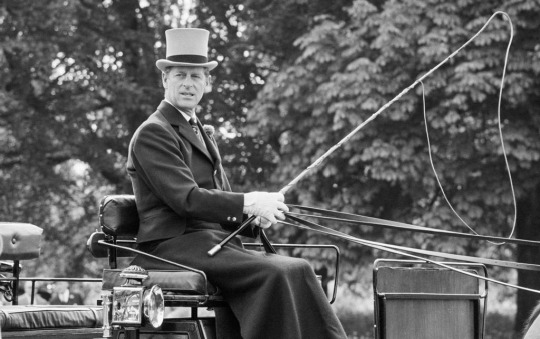
The Duke of Edinburgh 10 June 1921-9 April 2021
Horse & Hound | Published 15 April 2021
THE contribution of HRH Prince Philip, Duke of Edinburgh, to equestrianism was profound. He was not content only with enjoying horse sports as a keen competitor, but also gave back a huge amount of time and commitment in leadership and management, which had great impact on competitive riding and driving throughout the latter part of the 20th century.
His innovative 22-year term as president of the FEI, his work in developing the sport of driving trials and his impact on English polo all complemented royalty’s traditional involvement in racing and hunting, augmented by The Queen’s lifelong interest in breeding horses and ponies. Prince Philip was therefore a mainstay in the royal family’s patronage of British equestrianism throughout the post-war years and into the new millennium. He firmly encouraged his children to ride and took great pleasure in the achievements of the Prince of Wales in polo and the hunting field and the Princess Royal in horse trials and racing.
The Queen’s consort brought a fresh approach to the horseworld, with the same energy he devoted to so many other interests, ranging from conservation management to sailing. In the horseworld, as in every other aspect of an extraordinarily varied life, Prince Philip exercised a sharp wit and ironic humour, sometimes understood and appreciated, sometimes not. He was an extremely entertaining companion, especially at dinner after a day’s sporting activity.
The early years
IT is easy to forget that Prince Philip’s background and early childhood were far removed from the environment in which he became prominent as a leader of British horsemanship.
His birthplace was the royal palace of Mon Repos on the Greek island of Corfu on 10 June 1921, but he was not to remain there long. Philip left Greece as a baby, travelling in a hastily improvised cot of orange boxes when he was only a year old. He left so unceremoniously because his parents, Prince Andrew of Greece and Princess Alice of Battenberg, were exiled by the Greek government after Prince Andrew became the scapegoat for his country’s military disasters in Turkey.

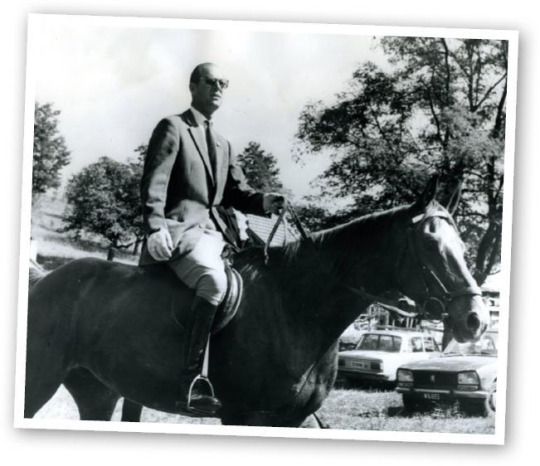
As a result, Prince Philip had a cosmopolitan childhood and teenage years of wandering, much of it spent at the homes of his four elder sisters, all of whom married into the German nobility. He spoke several languages. His father’s ancestry was not Greek, but essentially Danish, and some said Prince Philip’s appearance owed much to his Viking ancestry. His early schooling was in Paris before prep school at Cheam and then Gordonstoun and the Royal Naval College, Dartmouth, which launched his naval career.
His mother was often unwell and his father died in 1944. His mother’s brother, Admiral of the Fleet Earl Mountbatten of Burma, known to the royal family as Uncle Dickie, had most influence on Philip’s early life.
Mountbatten, a distinguished wartime naval officer and post-war international statesman, was one of the most persuasive, active and distinctive personalities in public life, and his influence on Prince Philip – and later Prince Charles – was profound. No one was more bereaved by Mountbatten’s assassination in 1979 than his royal nephew.
“The greatest game of all”
UNCLE DICKIE was renowned as a keen polo player, author of the standard work,An Introduction to Poloby “Marco”. He steered his nephew towards playing polo and, it was said, helped somewhat to steer him in the direction of marrying the future Queen of England on 20 November 1947. Anyone who knew Prince Philip could not have doubted he was always his own man in making major decisions.
His love of polo was born in Malta during his life in the Royal Navy. The Queen and Prince Philip lived in married quarters on the island soon after their marriage when the Prince commanded a frigate in the Mediterranean fleet.
From 1952, when The Queen succeeded to the throne, Prince Philip found “relaxation” from royal duties in hectic polo played at Cowdray Park, often being invited to ride Lord Cowdray’s polo ponies.
In his bookMen, Machines and Sacred Cows, Prince Philip recalled his polo-playing years with much affection: “Hot, tired and frequently hurting, you make your way back to the pony lines, thank the grooms, pat the ponies which did well and make friends again with the ponies who did not. Then for a shower, a change, almost the best moment of all, a cooling and refreshing drink with friends and kindred spirits to whom polo is not just a game, but the greatest game of all.”
Lord Cowdray was instrumental in helping to revive polo in post-war Britain on his West Sussex estate. Noticing how many Household Cavalry and Household Brigade officers were playing, Prince Philip provided the impetus for the formation of the Household Brigade Polo Club (now Guards) at Smith’s Lawn, Windsor Great Park, in 1955. Smith’s Lawn was to become a focus for much of the royal family’s leisure time.
The Queen was a frequent spectator and Prince Charles remembers Windsor Park as an early influence in watching the game – and wanting to take part. Prince Philip became one of the top eight players in Britain in the 1960s, achieving a highest handicap of five.
He summed up his attitude to polo: “I suppose every games player thinks his particular game is better than any other. I am no exception. I have no objection whatsoever to others enjoying their particular game, but give me polo every time.”
Polo buffs reported that the Prince had received some domestic advice on the tendency for some polo team members to use expletives during moments of stress in the game, some of which wafted over to the spectator area, including the royal pavilion where The Queen poured out the tea at après-polo tea parties on a Saturday afternoon. He wrote inThe Horseman’s Year: “Wives have been known to have very firm views about the way both their husbands and other players conduct themselves on the ground.”
Prince Philip captained teams at Windsor throughout the 1950s and 60s. He knew people throughout the sport and visited many of the smaller clubs, such as Toulston, Cheshire, Tidworth and Kirtlington, remarking: “Whenever I have managed to get away to play on some of these grounds, I have a wonderful time... the hospitality offered to visiting teams does nothing to improve the standard of play.”
The royal Duke, aided by Lord Mountbatten, was a firm mentor of Prince Charles in playing the game. Prince Charles, aged 15, received from his father his first polo pony, named San Quinina. He remembered later: “My father was a very good instructor and he gave me the basic techniques.”
Press photographers snatched pictures of Prince Philip giving his son “a serious talking to” in his coaching capacity after his early matches at Smith’s Lawn. In April 1967, Prince Philip played in the Windsor Park team with Prince Charles, Gerard Leigh and William Loyd. It was Prince Charles’s first success in tournament polo, playing for the Combermere Cup. Prince Philip and his son both scored in the final, with The Queen watching.
When The Queen came to present the cup, Prince Philip presented Prince Charles to The Queen with the remark: “This is one of my team-mates, I believe you know him...”
It was typical of Prince Philip that he made a firm decision to give up playing polo in 1971, with the remark: “I reckoned 50 was quite old enough for that game.”
A new discipline
PRINCE PHILIP was increasingly suffering from arthritis in his wrist, but he was soon keen to develop another equestrian interest – competition carriage driving. He took up the sport soon after retiring from polo, using five Cleveland Bays from the Royal Mews, with the keen co-operation of the crown equerry, Lt Col Sir John Miller, a natural horseman and a great hunting man and carriage driver.





Prince Philip said he largely trained himself in carriage driving, through practising hard on the long paths across the Sandringham estate, with help from Major Walter “Tommy” Thompson, former riding master of the Household Cavalry.
Soon Prince Philip excelled as a four-in-hand driver and he plunged into international contest. He was perfectly at home with the great many characters in the sport, from all sorts of backgrounds, and with them he would argue into the night – tactics and the best use of vehicles and harness.
George Bowman, the great Cumbrian whip, and many other driving experts from all over the world, were warmly welcomed by the Prince at Windsor, and various German cousins would be seen as passengers on his driving vehicles. As well as competition carriage driving, Prince Philip was an active member of the Coaching Club, which helped to ensure jolly drives, accompanied by ladies and gentlemen as guests, at royal venues such as Hampton Court and Sandringham. Prince Philip would drive a carriage from the Royal Mews at Windsor to polo at Smith’s Lawn with The Queen as passenger beside him.
He virtually invented the modern competitive driving sport, as president of the FEI from 1964 to 1986. With help from Col Sir Mike Ansell, Prince Philip drew up rules for “combined driving”, including the exciting marathon phase across country and the fiendishly difficult obstacle course.
After “a bit of arm twisting”, as he put it, Prince Philip ensured that competition carriage driving was firmly attached to the Royal Windsor Horse Show from 1971. He took part in the European Championships at Windsor in 1973 and was disappointed, but not discouraged, when he had to retire with a bent axle in the last hazard of the marathon. He completed one of only three clear rounds of the obstacle course to finish second in that phase.
Vehicles crashing or overturning were a regular feature of the marathon phase, and the royal whip seemed to relish the risks. He represented Britain in three European Championships and six World Championships. In the 1982 World Championships in the Netherlands, he finished sixth overall out of 39 entries; the same year he was the overall winner at Windsor. The Royal Mews, formerly the preserve for ceremonial work of the Cleveland Bay, Britain’s only true native carriage horse, saw the arrival of horses crossed with Oldenburgs, which Prince Philip believed had “probably the best paces of any of the carriage breeds”, which he deemed best for competition work.
Rather like Uncle Dickie, Prince Philip produced a worthwhile handbook on his sport, which has stood the test of time. The excellentCompetition Carriage Driving,published in 1982, reveals the Prince’s love of mechanical detail. He gives the fullest explanations of the construction of carriages and harness and reveals his own innovative approach. He gained some advice and help from British Aerospace in building a strong, but lightweight, metal, dual-purpose carriage for the presentation and dressage phase, as well as the marathon.
Prince Philip provided some merriment for the equestrian press when he was explaining in detail his views on such technical matters as swingletrees, at a press conference in the Royal Mews to launch his book. Suddenly, he received a question about details of the forthcoming marriage of Prince Andrew. It came from a tabloid reporter, who had infiltrated the gathering.
The affable Prince gave way to a very annoyed royal personage.
“I am certainly not here today to discuss trivia,” he said sternly. He instructed his aides: “Get that man out of here!”
In 1986, Prince Philip, aged 65, gave up driving horses in harness and switched to driving teams of home-bred Fells, which were otherwise used for stalking at Balmoral. He continued competition driving with teams of ponies, often just as hectic and hazardous as the horse competition, throughout his sixties and seventies, and clearly continued to gain great enjoyment from the sport.
He declared: “I find the pony teams class rather more light-hearted, and it has provided me with a great deal of fun. Furthermore, most of the other pony team drivers are considerably more glamorous than our colleagues in the horse teams.”
The modern horseworld
AS FEI president, Prince Philip brought his energies to bear on frequent attempts not always successful, to upgrade existing sports by rewriting their rules, causing many a pursed lip and puzzled frown to some officials. He threw himself into reforming the ramifications of horse passports – and veterinary controls – to enable competition horses to pass frontiers more easily.
Although he described himself as a “neutral chairman between the different factions in showjumping, dressage and horse trials”, he inevitably became embroiled in the post-war Olympics professional-vs-amateur debates.
Controversially, he encouraged the setting up of a category of professional riders who received advantages in terms of taxation, but were debarred from riding in the Games. The problem was that although a number of leading British showjumpers voluntarily took on professional status, too many leading jump riders on the Continent, especially the Germans, declined to do so, although their professional remuneration from the sport in various ways was just as obvious. They thereby continued to ride in the Games. This problem persisted until the International Olympic Committee abandoned the pro-am distinction for all sports competitors, but by then there had been a dearth of showjumping medals for Britain at the Olympics, and some of the former “professionals” were past their peak.

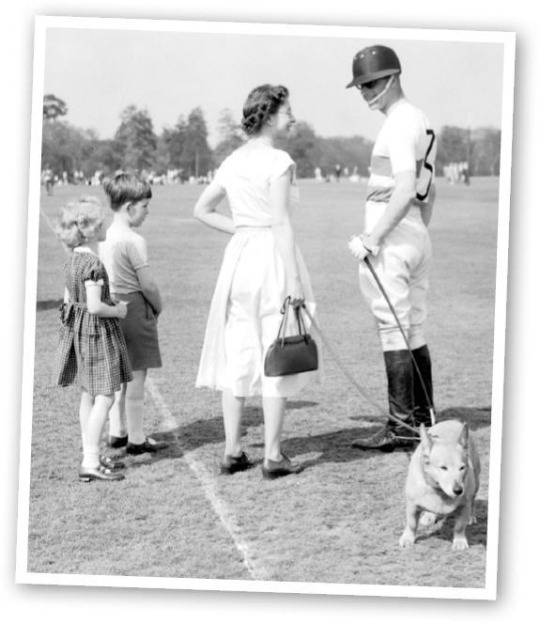
Another burning controversy, in which Prince Philip was ready to engage, was the use of phenylbutazone, or bute, on competition horses. He would tap his painful wrist, saying: “Well, I take bute – and it has done a lot for me.”
Under Prince Philip the FEI set up a system of proportional use of bute, but testing and measuring horses worldwide to ensure only the allowed percentage of the drug was present proved to be difficult and expensive. There were arguments about the results of such tests.
Eventually, the FEI had to revert to a complete ban on its use, whichH&Hargued was the only practical solution – and much easier to test.
At a line-up at the South of England show, the Prince rounded on me as the then editor ofH&Hsaying: “You got it wrong in the paper on the drugs again last week!”
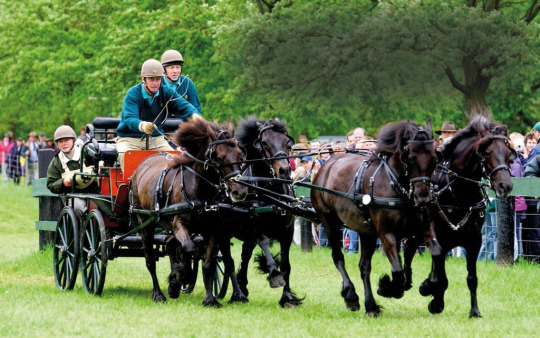
A lively discussion ensued and I suggested the Prince write a “Letter to the Editor” on the subject and, to his great credit, Prince Philip did so. It was published without any special presentation as just another letter and was never picked up by the national press.
The Prince once debated the pro-am issue over lunch in an outspoken argument with Harvey Smith and other leading showjumpers. The general view afterwards was: “We may not always agree with him, but he’s a jolly good bloke.”
The controversies were part of the growing pains of the horseworld and Prince Philip left the FEI and horse sports in a far better state overall, in terms of meeting modern conditions, when he retired as president in 1986. He was succeeded by the Princess Royal, who continued her father’s work for the next eight testing years.
Prince Philip memorably described the horse as “the great leveller”. Certainly, it was one of many ways in which he reached people across a wide spectrum. He was as enthusiastic about the Prince Philip Cup for the Pony Club – having founded the mounted games competition in 1957 – as he was about the highest levels of adult sport, and would often appear at Wembley to present the prizes, as well as taking a close interest in the qualifiers.
Prince Philip’s special legacy to horsemen in Britain – and everywhere else – is seldom quantified, but it is immense, and everyone who enjoys horses and ponies is in his debt as a great enthusiast and innovator. Royal patronage was not just a duty; it was a role carried out enthusiastically and energetically by The Queen’s consort.
In his own words: “Some optimists tend to assume that, once you have learnt the lesson that horses bite at one end and kick at the other, there is nothing further to worry about – no such luck, I am afraid. That is only lesson one in a learning process that goes on as long as you are mug enough to continue to associate with horses.”
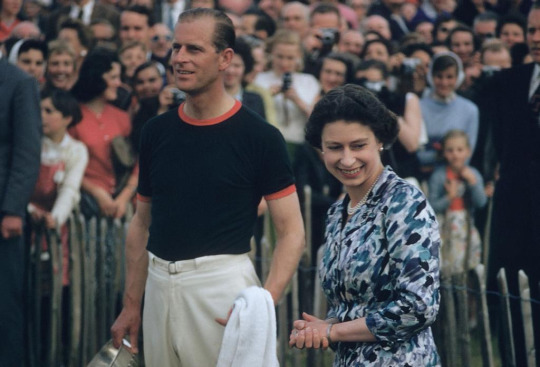
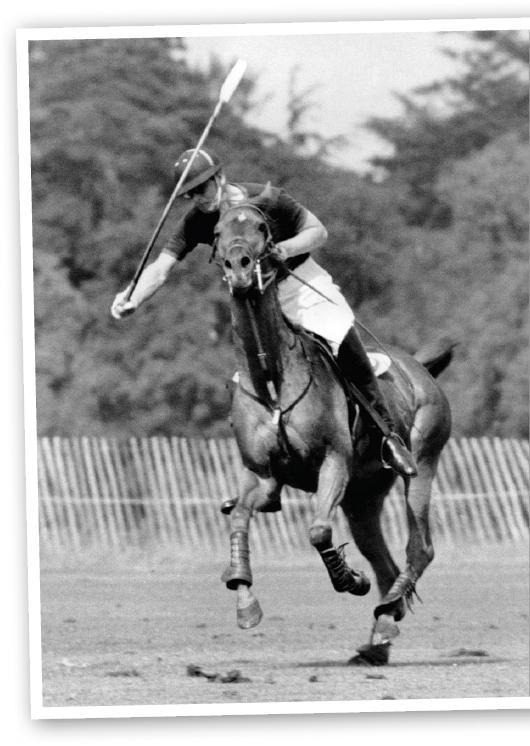
Pictures by Robin Jones/Evening Standard/Hulton Archive/Getty Images, Mark Cuthbert and United Press International. Pictures by Odhams Press Agency, David Levenson/Getty Images, Sports & General Press Agency and Mark Cuthbert/UK Press via Getty. Pictures by Tim Graham/Getty, PA Wire/PA Images, Press Association Ltd, Slim Aarons/Getty and Central Press/AFP via Getty
26 notes
·
View notes